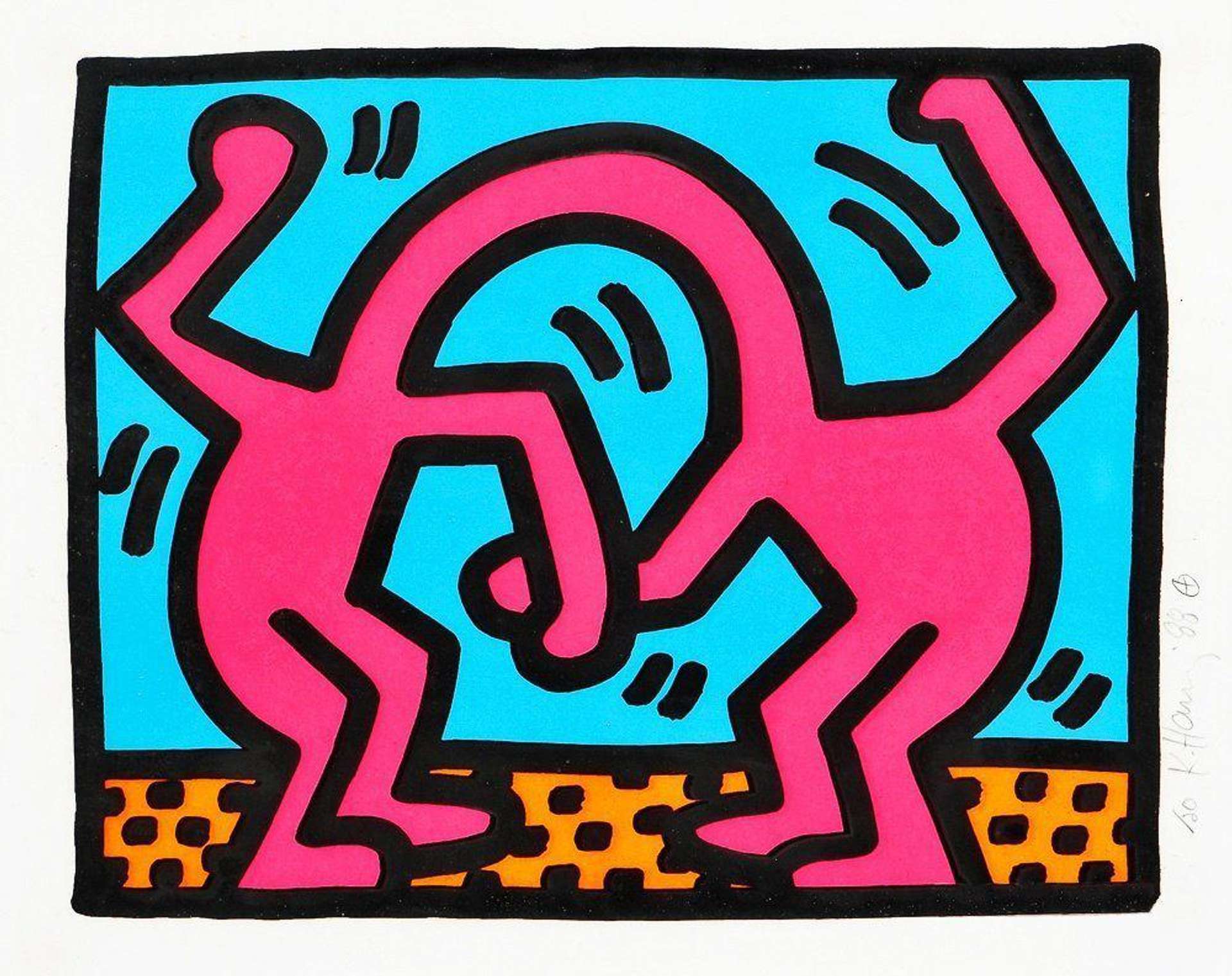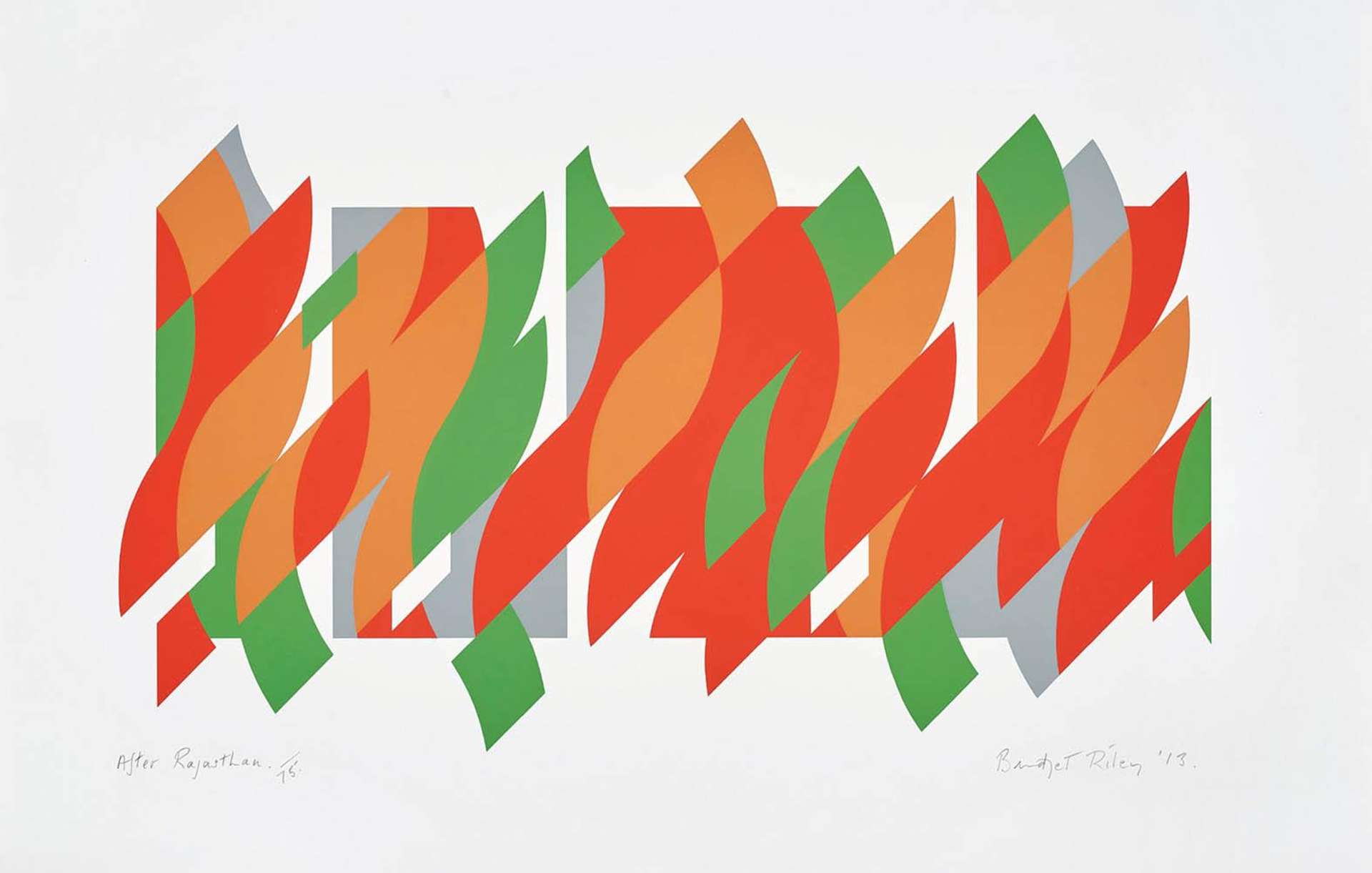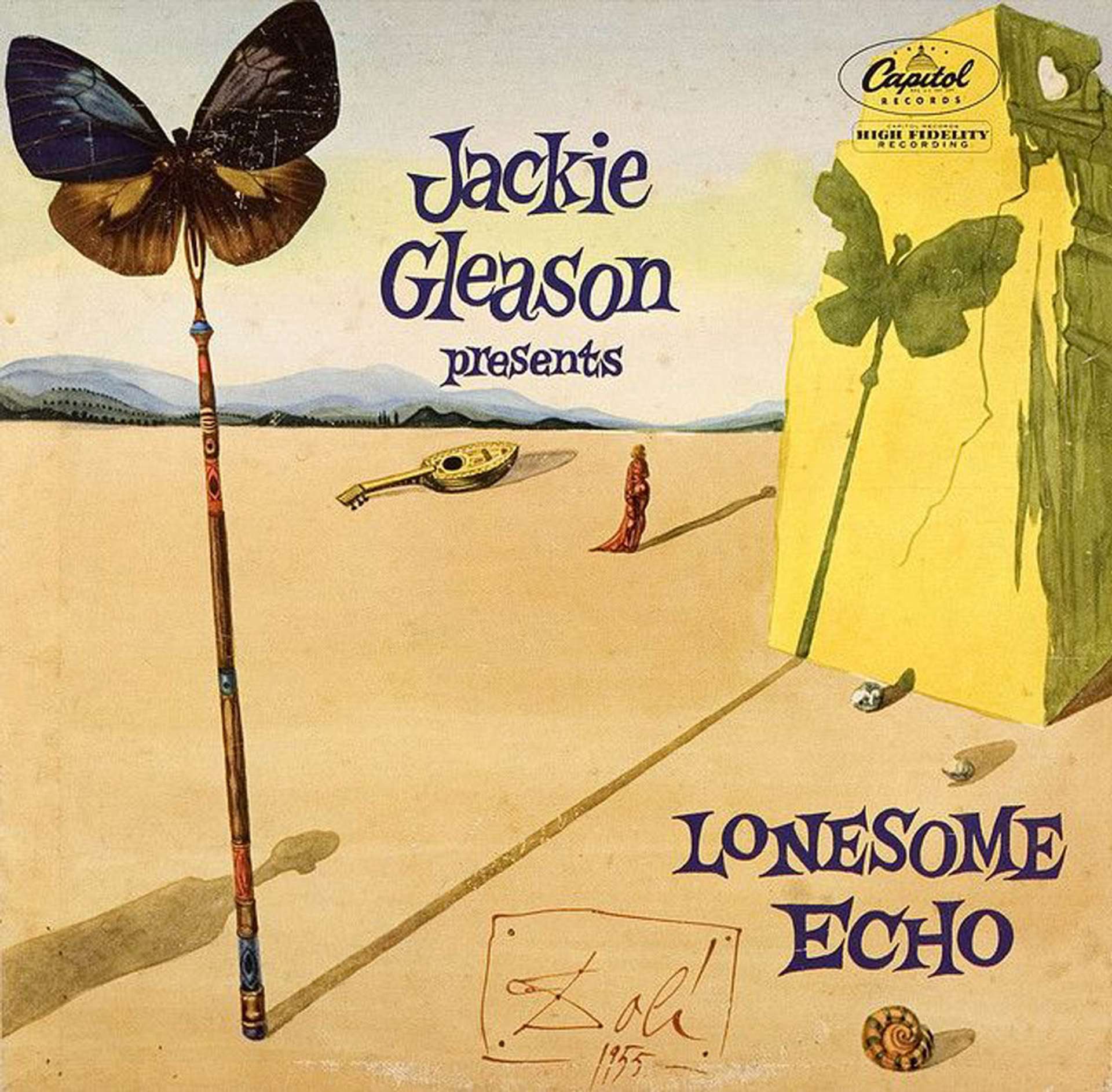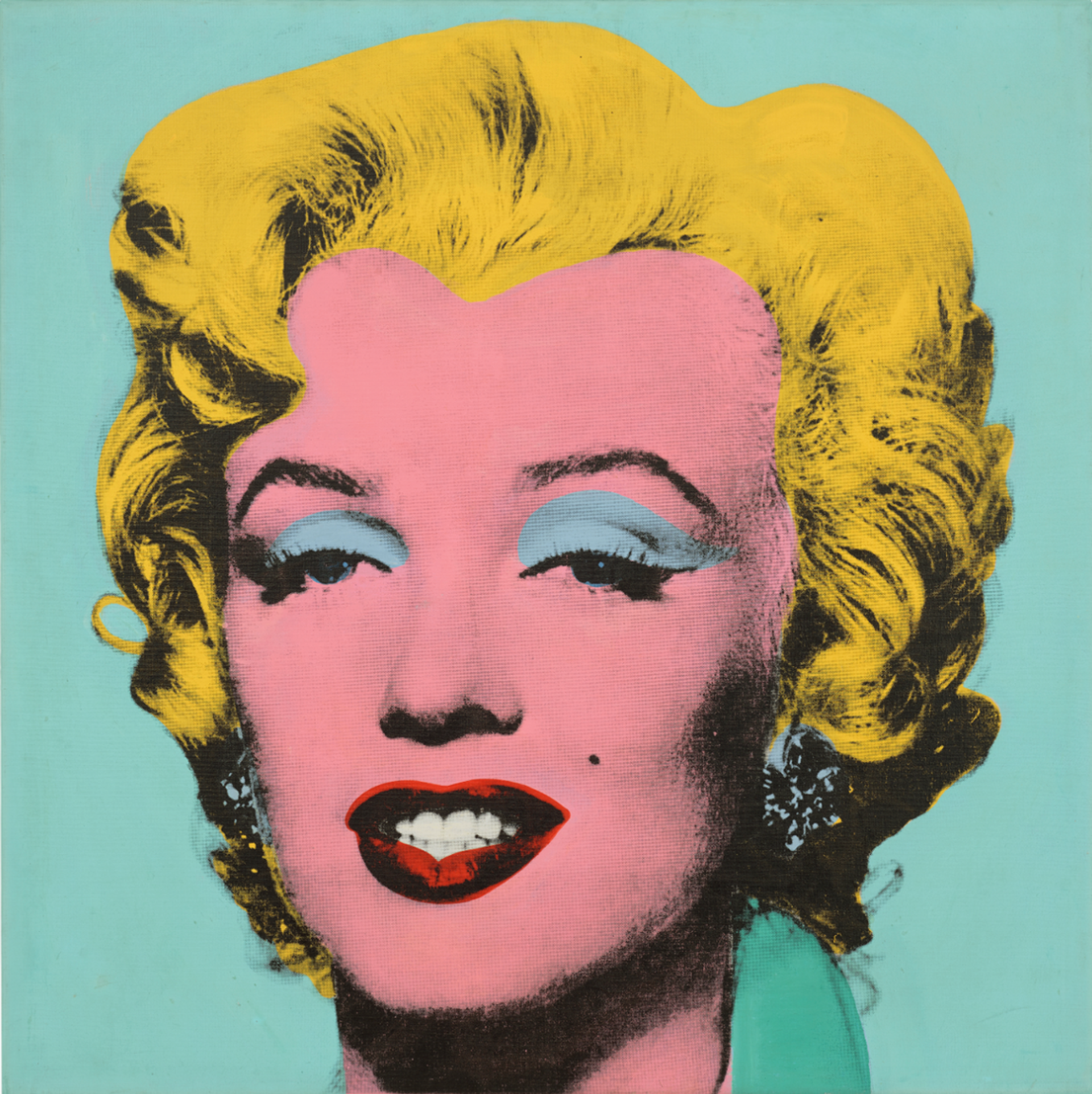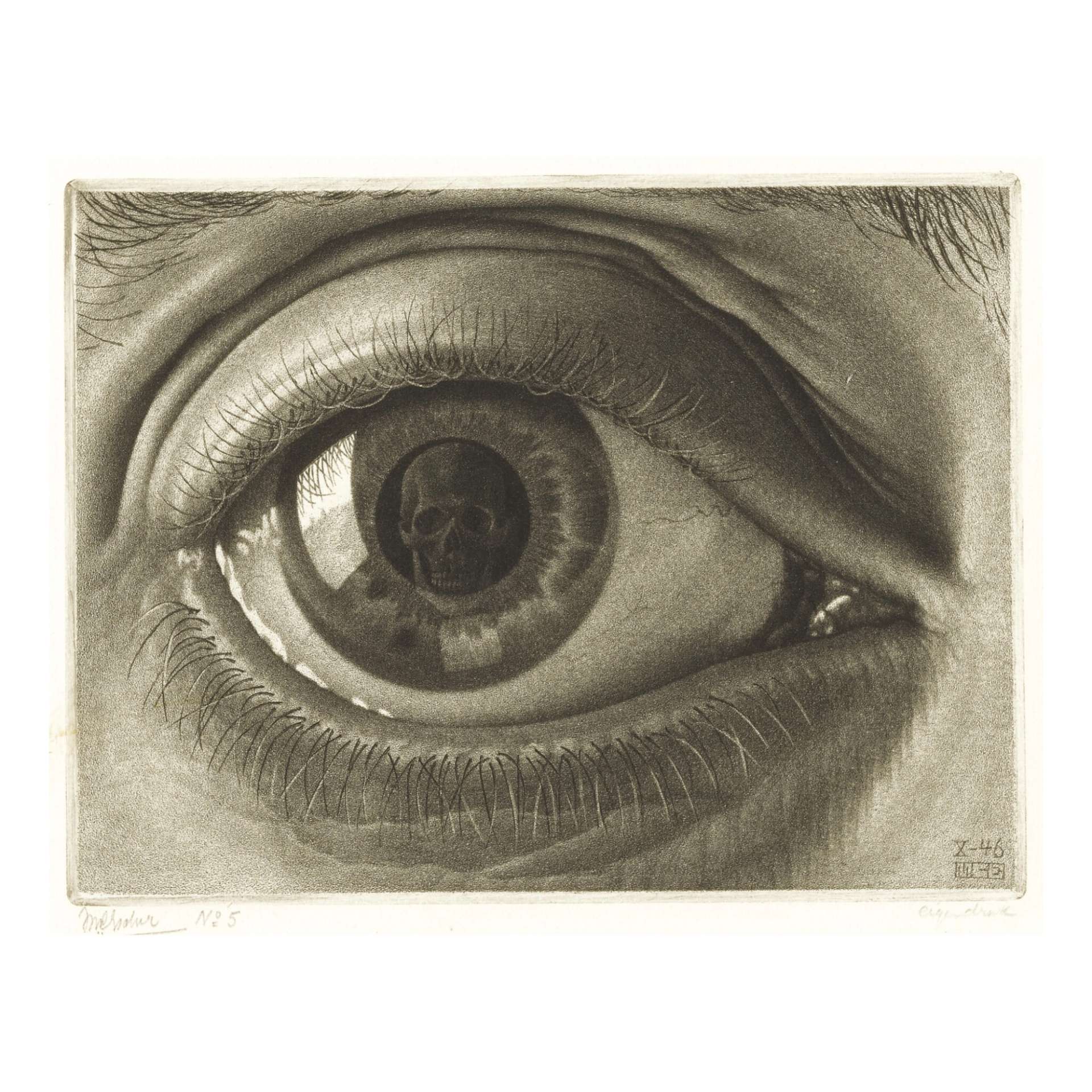 Eye © M.C. Escher 1946
Eye © M.C. Escher 1946Maurits Cornelis Escher, widely known as M. C. Escher, was a Dutch graphic artist born in 1898 who gained international acclaim for his mathematically-inspired works. His intricate designs and impossible constructions have awed mathematicians and art enthusiasts alike and pervaded the realms of pop culture, music and film, leaving a lasting impact that transcends generations. From album covers to movies, Escher’s influence has been pervasive, demonstrating the widespread appeal of his intriguing creations and the fascination they hold for audiences
M. C. Escher's Enduring Influence on Pop Culture
Renowned for their interplay of reality and illusion, M. C. Escher's lithographs, woodcuts and mezzotints have a mesmerising quality, often featuring mind-bending visual paradoxes and intricate repeating patterns that challenge our perspective and spatial perception. Today, in addition to explicit tributes, Escher's influence permeates many aspects of pop culture, from music and film to fashion and advertising, and his intriguing illusions and explorations of infinity have been used to create visually arresting designs. His influence even extends to the realm of academic studies, particularly in mathematics and physics, where his work continues to inspire research into geometric tessellations and the nature of space.
 Image © Photographer: Hans Peters (ANEFO), CC0, via Wikimedia Commons
Image © Photographer: Hans Peters (ANEFO), CC0, via Wikimedia CommonsThe Art of M. C. Escher: Themes and Techniques
M. C. Escher's art is a symphony of mathematics and visual perception, creating a mesmerising interplay between reality and illusion. His work is characterised by intricate designs, exploring themes such as infinity, symmetry, tessellations and impossible constructions. One of the most recurring themes in his work is the exploration of infinity, which is often represented through his use of paradoxes and pattern repetition. Artworks like Drawing Hands, where two hands appear to be drawing each other in a continuous loop, demonstrate this: it is a composition that questions the nature of creation and self-reference. Another illustration of this theme is Print Gallery, where the image recursively zooms into itself, creating a visual depiction of infinity. Escher was also fascinated by the idea of dividing a plane in a way that every piece of it fits into each other perfectly, a concept known as tessellation. He created numerous pieces that displayed these tessellations, often incorporating creatures like birds, fish, and reptiles. His Regular Division of the Plane series is a notable example of this, due to its intricate tessellating patterns.
However, Escher is perhaps most known for his impossible constructions. These works depict objects and buildings that seem plausible at first glance but, upon closer inspection, violate the laws of physical reality. Notable examples include Relativity, with its multiple conflicting gravity directions, and Waterfall, where water seems to flow uphill to power a perpetually moving waterwheel, creating an impossible loop. He used several techniques to create these mind-bending illusions, such as the use of unusual perspectives and distorted geometry and the concept of metamorphosis, where he would gradually transform one shape into another across a tessellated pattern. The latter is evident in Sky and Water I, where fish transform into birds as you move from the bottom to the top of the image.
Lastly, Escher also often makes use of recursion, a technique where objects are nested inside each other in a way that appears to go on forever, which helped him create his unique sense of impossible reality and infinity.
M. C. Escher was a master of blending art and mathematics, creating a world of visual paradoxes that captivates the imagination. His exploration of themes like those above, coupled with his ingenious techniques, resulted in a body of work that challenges our perception and understanding of space and reality.
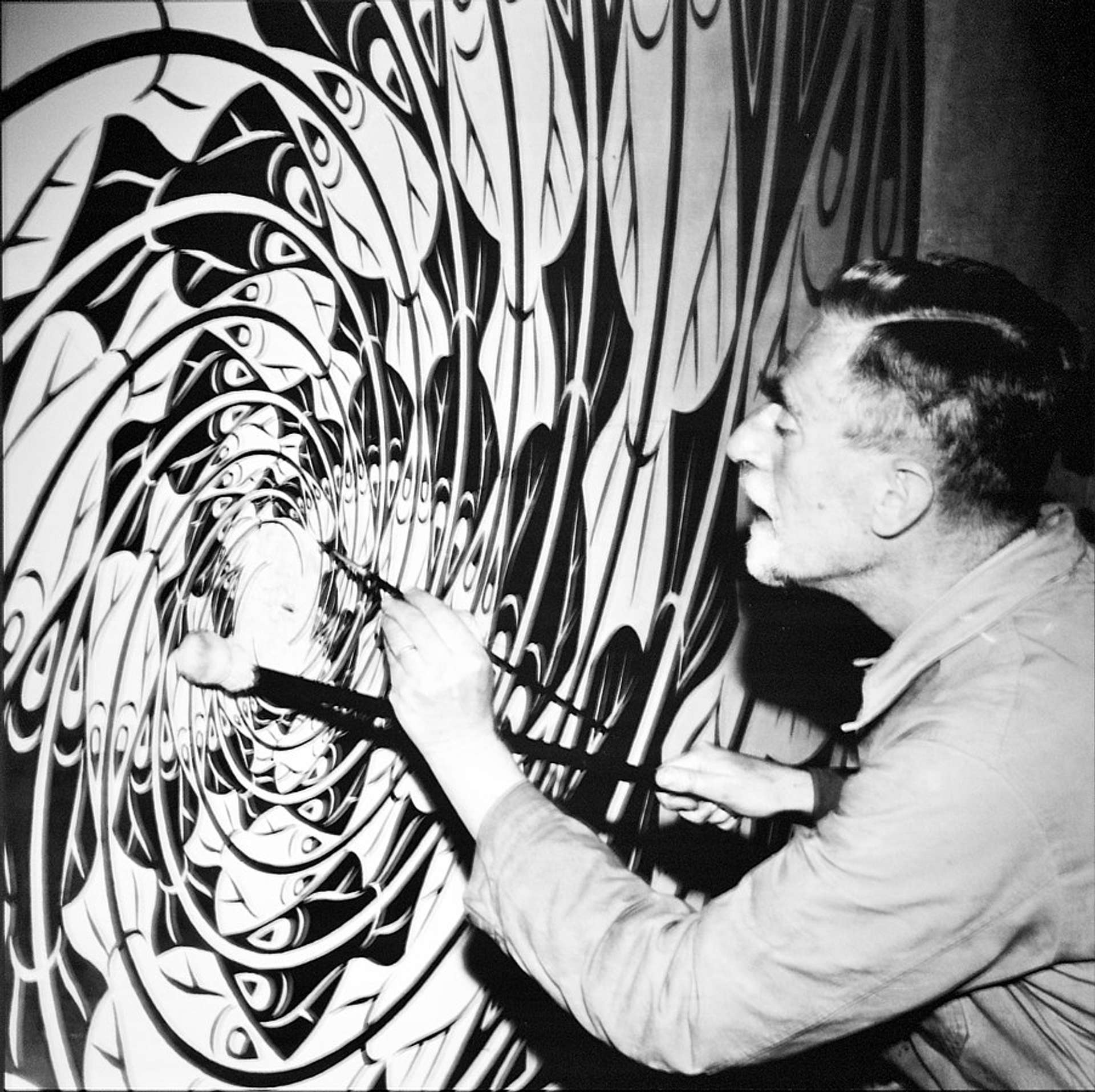 Image © Pedro Ribeiro Simões from Lisboa, Portugal, CC BY 2.0, via Wikimedia Commons
Image © Pedro Ribeiro Simões from Lisboa, Portugal, CC BY 2.0, via Wikimedia CommonsM. C. Escher in Popular Culture: A Brief History
M. C. Escher's rise in popular culture has its roots in the very nature of his approach to perceptual psychology. His work has always transcended the conventional boundaries of art, appealing not only to the artistic community but also to scientists, mathematicians and the wider public. During his lifetime, Escher's art was vastly more appreciated in the popular sphere, rather than the art world. Its vast originality was such that it featured spectacles truly never seen before, that defied perception even; perhaps it was for this reason they found greater popularity with the general public, who could happily comprehend the awesomeness of visual illusion, than with an overwhelmingly traditional art world.
Escher began to move beyond the traditional art world and into pop culture around the mid-20th century. During this time, his pieces were highlighted in scientific and mathematical journals, sparking intrigue and admiration among a more diverse audience.
Towards the end of his life, his genius works gained broader recognition as their somewhat psychedelic nature found affinity in the times. During the 1960s and 1970s, they featured prominently on many album covers, helping to propel his surge in popularity. This initial appeal to the counterculture movement of the time eventually led to more canonical recognition in the art world, and M.C. Escher would see some of this fame before his death in 1972.
The release of the book “The World of M. C. Escher” in 1971 was one sign of his growing status as a canonical figure, and helped to make his works accessible to a broad, international audience. During the same period, Escher's work began appearing on posters, T-shirts and in advertisements, further embedding it into popular imagination. A notable early reference to Escher's work in literature is in the book “Gödel, Escher, Bach: An Eternal Golden Braid” by Douglas Hofstadter, published in 1979. The Pulitzer Prize-winning book explored common themes in the works of logician Kurt Gödel, Escher, and composer Johann Sebastian Bach - confirming Escher's status among ‘greats.’
By the time of his death in 1972, Escher had become a cultural phenomenon, his works widely recognised and appreciated far beyond the confines of the art world. His influence has endured and even grown since then, with his art continuing to inspire musicians, filmmakers and artists to this day.
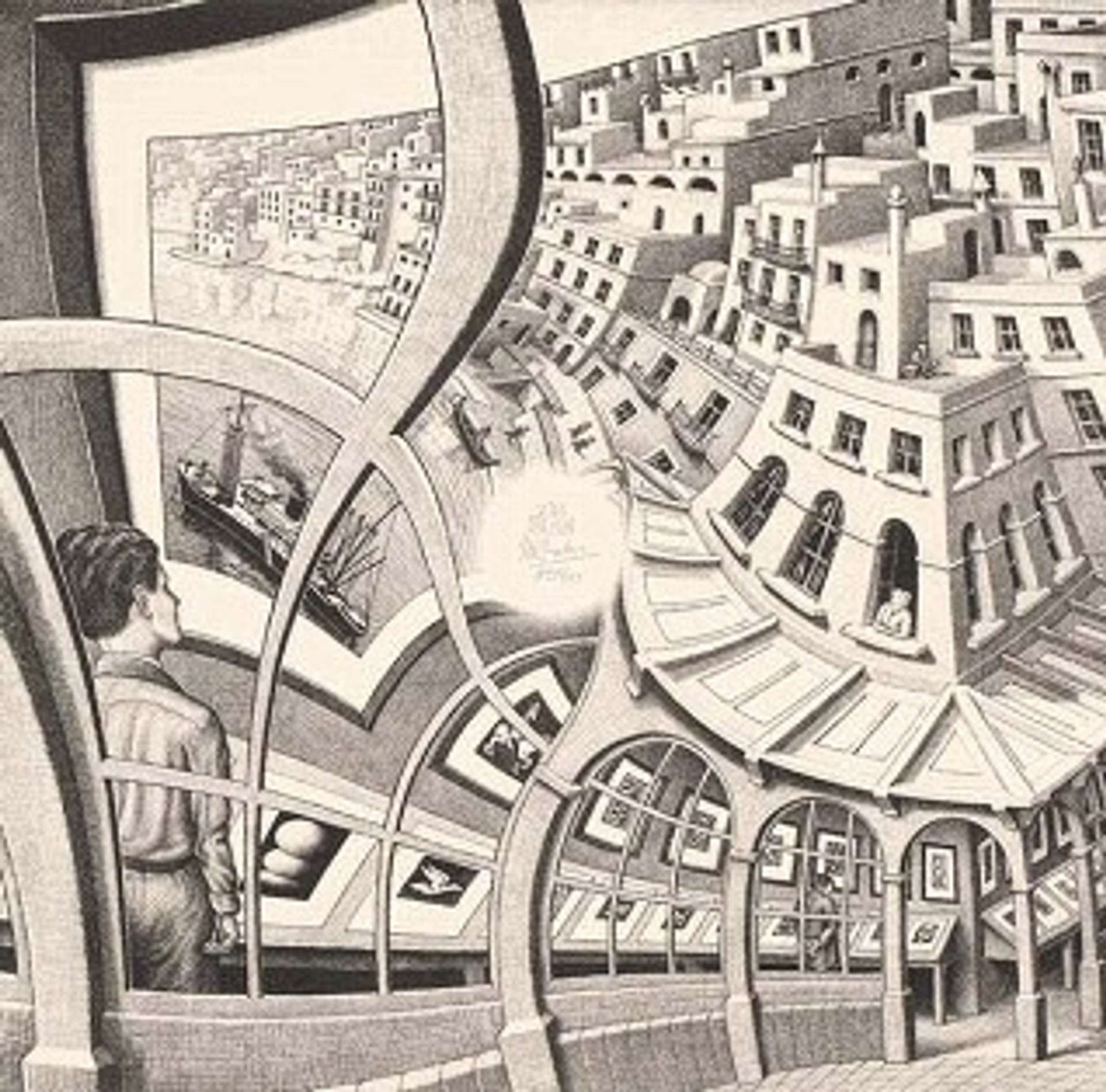 Print Gallery © M. C. Escher 1956
Print Gallery © M. C. Escher 1956M. C. Escher in Films: From Labyrinth to Inception
M. C. Escher's work has had a profound influence on the world of film and television. His intricate designs and mind-bending visual illusions have been a source of inspiration for directors and production designers, informing the aesthetic and visual language of several cult movies and TV shows.
One of the earliest and most notable references to Escher's work in film is in Jim Henson's 1986 fantasy film Labyrinth. The movie’s climactic scene in which the protagonist Sarah confronts the Goblin King, played by David Bowie, takes place in an environment directly inspired by Escher's Relativity. In this scene, the characters traverse an array of staircases that defy the laws of gravity and perspective, much like in Escher's lithograph. This surreal, disorienting design adds to the movie’s fantastical, dreamlike ambiance.
Another significant instance of Escher's influence can be found in Christopher Nolan's 2010 film Inception. Its dreamlike, shifting landscapes bear a strong resemblance to Escher's work, and the movie also particularly references Relativity. One of the most memorable scenes in the film is the Penrose Stairs sequence, an impossible construction akin to Escher's Ascending and Descending. This illusion, in which characters seem to walk endlessly upwards, mirrors the film’s central themes of dreams, perception, and reality.
Escher’s art has had a lasting impact on the visual language of cinema, providing filmmakers with a rich source of inspiration for creating visually captivating and thought-provoking scenes. His exploration of impossible spaces, infinite regress and perspective illusions have added a new dimension to visual storytelling, enabling filmmakers to visually represent complex themes such as dreams, alternate realities and the nature of perception. Within these and other films and TV shows, Escher demonstrates the enduring appeal and versatility of his work, whether that is in their capacity to evoke a sense of disorientation, or to visually represent abstract concepts.
 Reptiles M. C. Escher © 1943
Reptiles M. C. Escher © 1943M. C. Escher in Music: From Album Covers to Music Videos
Music, with its rhythmic arrangement and symmetries, has a natural affinity with Escher's work and, over the years, numerous musicians have been inspired by his art. His intricate patterns and impossible constructions lend themselves to the often abstract and interpretative realm of music, creating a fusion of audio and visual elements that enhance each other and resonate with audiences.
An early instance of Escher's influence on music can be seen in the British rock band Mott the Hoople's self-titled debut album, released in 1969. The album cover features a direct reference to Escher's lithograph Reptiles, which shows a cycle of lizards crawling out of a drawing and returning to it. This reference not only gives the album a distinctive visual appeal but also reflects the album’s themes of circularity and transformation. The 1976 album Boxed by Mike Oldfield references two of Escher’s works: Print Gallery and Another World II. In the realm of music videos and live performances, Escher's influence is equally pervasive. The music video for Daft Punk’s song Around the World features people dressed like mummies, similar to those in Escher’s painting, perpetually walking around on a set of stairs. This visually arresting moment complements the song’s repetitive and cyclical rhythm.
Escher's impact on music and album art demonstrates the versatility and universal appeal of his work. His ability to visually represent abstract concepts such as infinity, recursion and impossible realities has allowed musicians and artists to accompany their audio creations with equally thought-provoking visuals, creating a multi-sensory experience for audiences. As such, Escher's legacy continues to reverberate through the music industry, inspiring new generations of artists and audiences alike.
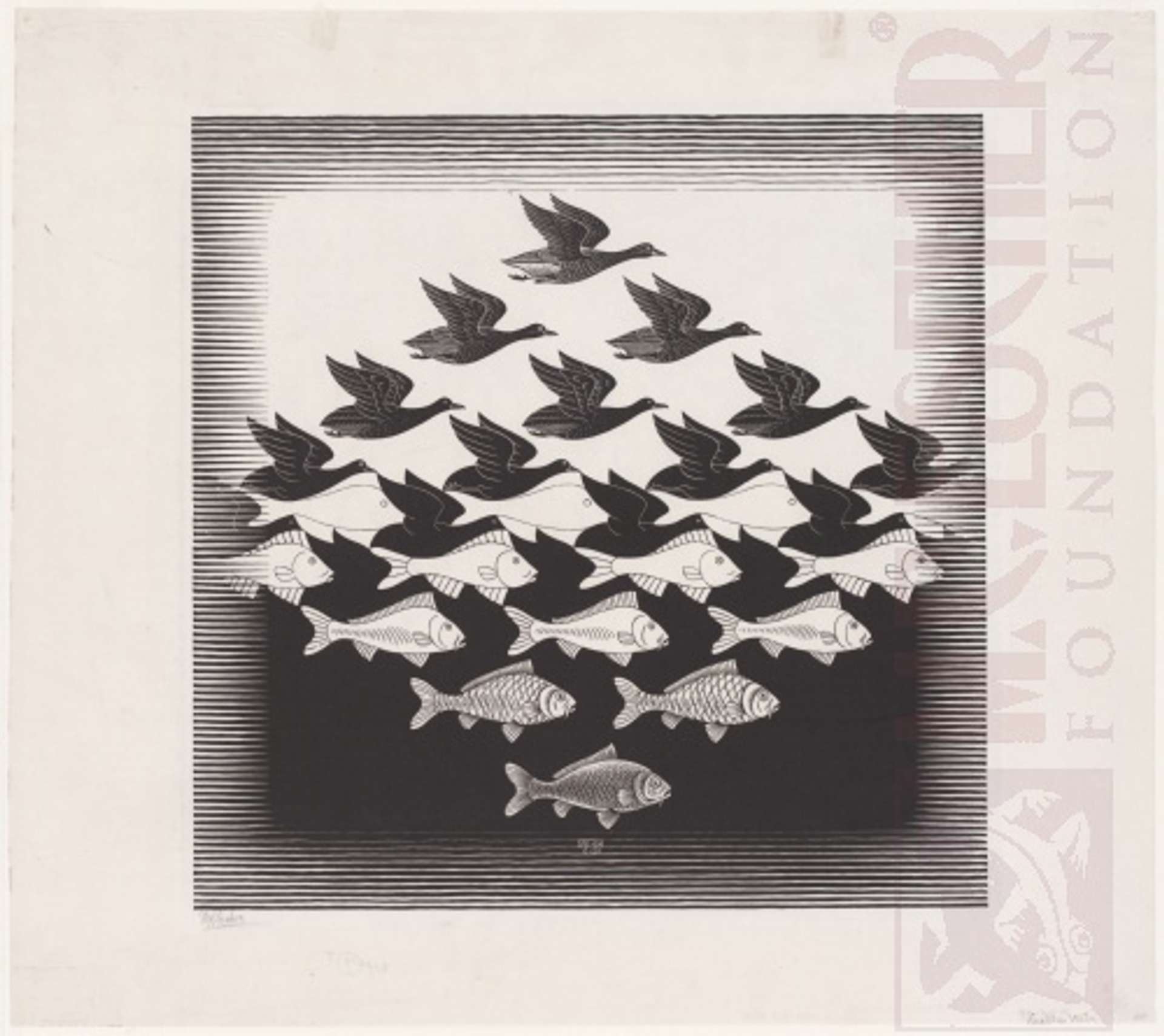 Sky and Water © M. C. Escher 1938
Sky and Water © M. C. Escher 1938M. C. Escher in Fashion and Design: From Clothing to Architecture
Escher's far-reaching impact also reaches into the realms of fashion, architecture and design. In the world of fashion, Escher's influence has been especially prevalent. His distinctive tessellations have been used as patterns in clothing and accessories by various designers and brands. For instance, Supreme, a popular streetwear brand, released a collection in 2017 featuring his works. The collection included shirts, hoodies and jackets adorned with Escher's iconic prints, reflecting the ongoing influence of his art in contemporary culture.
Beyond fashion, Escher's influence extends to architecture and interior design, where his exploration of space, perspective, and impossible realities has inspired innovative design concepts. Architectural structures that seemingly defy gravity or that incorporate unusual perspectives can be seen as a nod to Escher's impossible constructions. China-based architectural firm Studio 10 designed an M. C. Escher-inspired guesthouse, with illusionary spaces and endless staircases.
 Convex and Concave © M. C. Escher 1955
Convex and Concave © M. C. Escher 1955M.C. Escher's Legacy: Who Has He Influenced?
As we have seen, Escher’s legacy is enduring and wide-reaching, influencing a diverse array of artists, designers, filmmakers and even mathematicians. His distinctive style and innovative concepts have inspired direct references and reinterpretations, and also have broadly shaped the way contemporary artists approach themes like perspective, infinity and spatial manipulation.
In the world of visual arts, numerous contemporary artists have cited Escher as an influence. For example, British artist Patrick Hughes has become known for his “reverspective” paintings, which play with perspective in a way that mirrors Escher's explorations. In these works, the parts of the painting that seem farthest away are actually physically the closest, creating a disorienting effect reminiscent of Escher's impossible constructions. Escher's influence extends to digital art as well. Many digital artists like Jos Leys have created works that pay homage to Escher's themes and techniques, using modern tools to explore the same concepts of infinite recursion and impossible geometry.
In a world where virtual realities and fractal geometries are no longer just figments of the imagination, Escher’s ideas continue to resonate with the public. His art challenges us to question our perception and explore the boundless possibilities of visual representation, making his influence as relevant today as it ever was. His unique perspective and innovative exploration of visual and spatial paradoxes have not only inspired a myriad of artists but have also shaped the visual language of the modern world. From visual art to architecture, and from fashion design to digital media, Escher's impact remains a vital part of our cultural fabric.
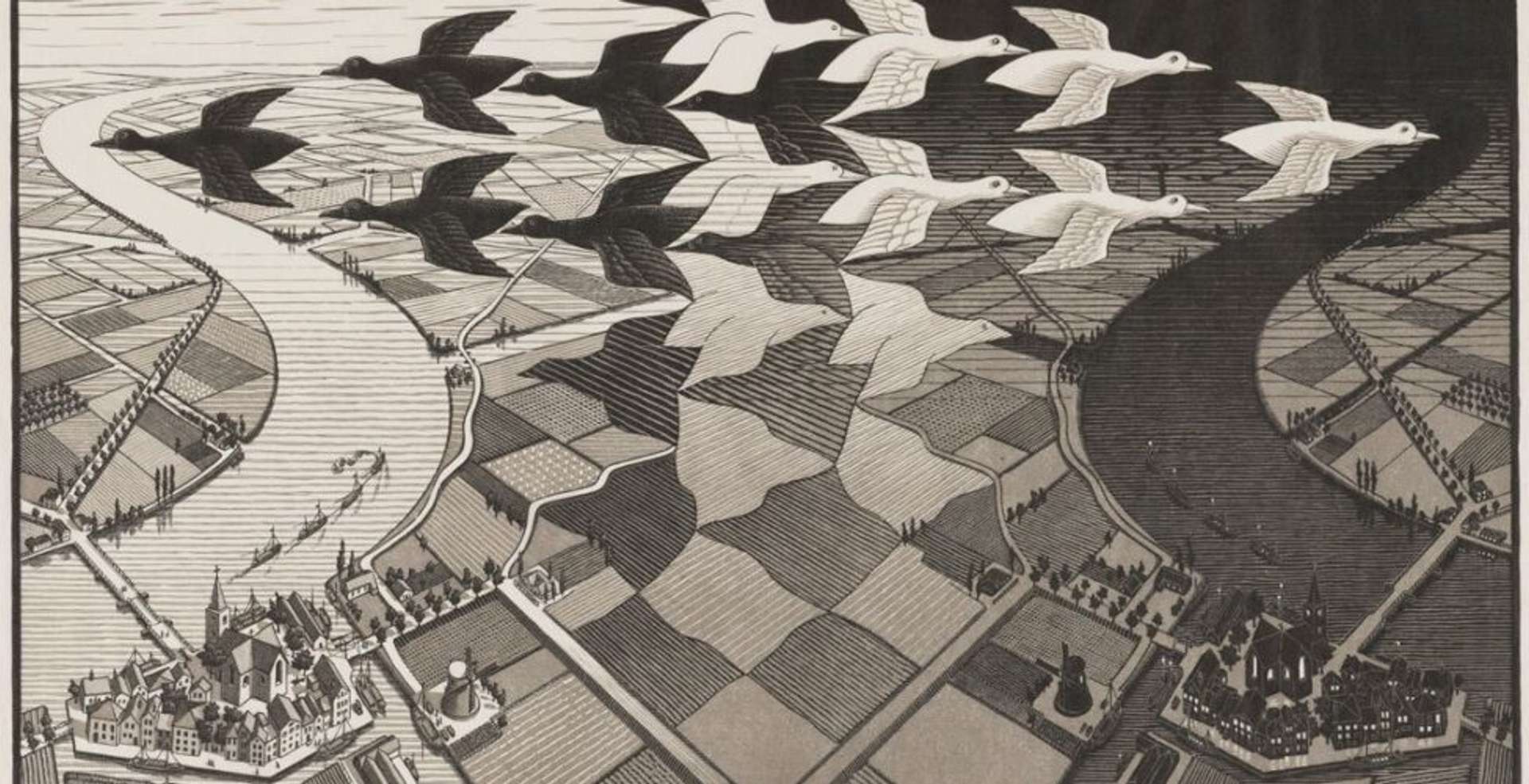 Image © Portland Art Museum / Day & Night © M.C. Escher 1938Image © Portland Art Museum / Day & Night © M.C. Escher 1938
Image © Portland Art Museum / Day & Night © M.C. Escher 1938Image © Portland Art Museum / Day & Night © M.C. Escher 1938From album covers to blockbuster films, and high fashion collections to architectural designs, the influence of his works is evident. Even in the digital age, his themes of infinity and impossible spaces find new relevance, influencing video game design and digital art.
Escher's art also continues to inspire new generations of artists and thinkers. M.C. Escher's unique fusion of art and mathematics has spawned an aesthetic that continues to intrigue, ensuring his legacy lives on in the albums we listen to, the films we watch and the broader visual landscape of our lives. His influence on pop culture has been profound and enduring.



